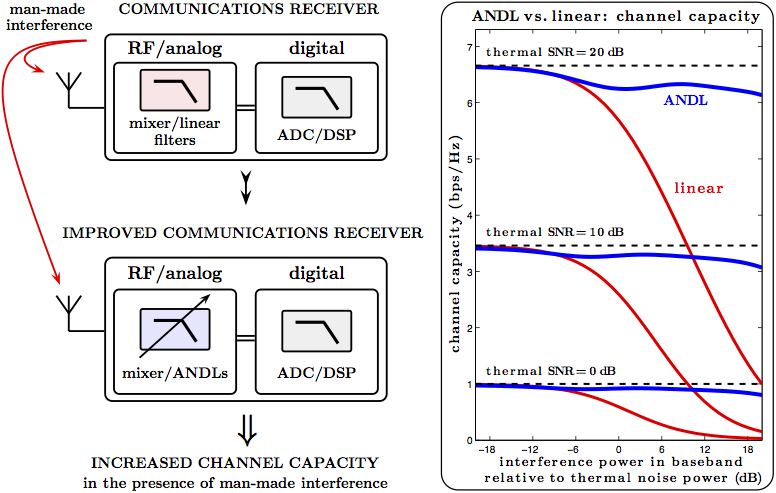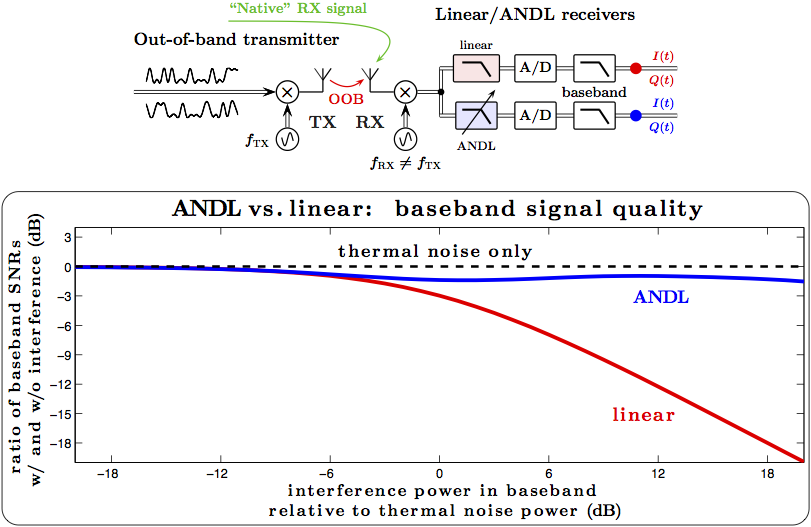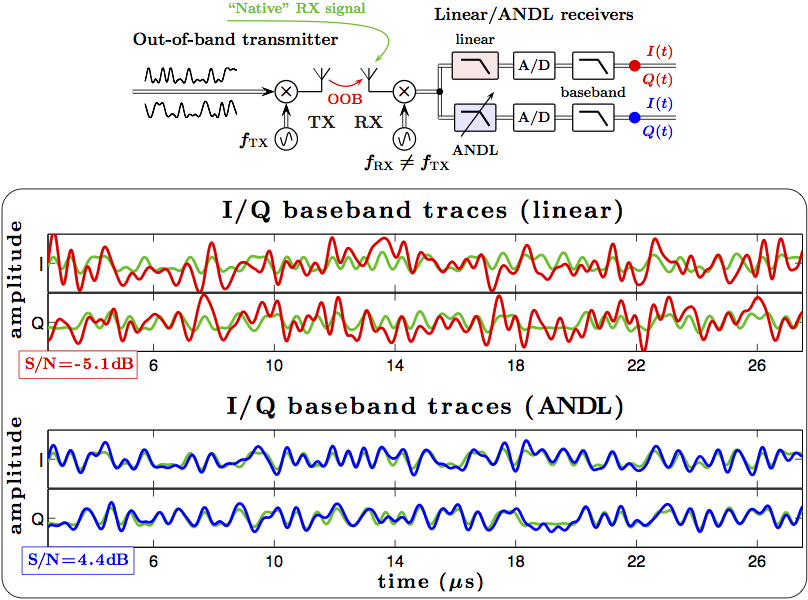Communications receivers resistant to man-made interference
In a perfect-world communication technology we would have "brick wall" filters, no-distortion amplifiers and mixers, and well-coordinated spectrum operations. The real world, however, is prone to various types of unintentional and intentional interference of technogenic (man-made) origin that can disrupt communication systems, with impacts ranging from a slight reduction in the channel capacity to the channel failure. Such interference can be effectively mitigated by the Adaptive Nonlinear Differential Limiters (ANDLs) being developed by AvaTekh

ANDLs simply replace certain existing linear filters in the receiver (for example, the anti-aliasing filters preceding the analog-to-digital converters), providing resistance to the technogenic interference independent of the modulations schemes and communication protocols. ANDLs are designed to be fully compatible with existing linear devices and systems, and to be used as an enhancement, or as a low-cost alternative, to other state-of-art interference mitigation methods
Improved signal quality
An important consideration of technogenic noise is its dynamic nature, which makes it extremely challenging to quantify and address the multitude of complicated interference scenarios in non-stationary communication systems such as, for example, cognitive networks comprising mobile transmitters and receivers, each acting as a local router communicating with a mobile ad hoc network (MANET) access point. In such situations interference mitigation tools must adapt to the dynamically changing interference. The Adaptive NDLs (ANDLs) have been developed to address this challenge. ANDL configurations contain a sub-circuit that monitors a chosen measure of the signal+noise mixture and provides a time-dependent resolution parameter to the main NDL circuit, making it suitable for improving quality of non-stationary signals under time-varying noise conditions

Reducing interference in the signal passband
A linear filter affects both the noise and the signal of interest proportionally, and when a linear filter is used to suppress the interference outside of the passband of interest, the resulting signal quality is invariant to the type of the amplitude distribution of the interfering signal, as long as the total power and the spectral composition of the interference remain unchanged. ANDLs, however, can reduce the spectral density of a man-made interference in the signal passband without significantly affecting the signal of interest

In the figure above, the fact that the ANDL indeed reduces the spectral density of the interference without significantly affecting the signal of interest can be deduced and gauged from observing how the quasiperiodic structure of the PSD is affected by the ANDL in comparison with the linear filter. As a result, the baseband signal quality is improved

If the Shannon formula is used to calculate the capacity of a communication channel, the baseband SNR increase from -5.1 dB to 4.4 dB provided by the ANDLs in the two examples above results in a 391% (factor of 4.91) increase in the channel capacity
